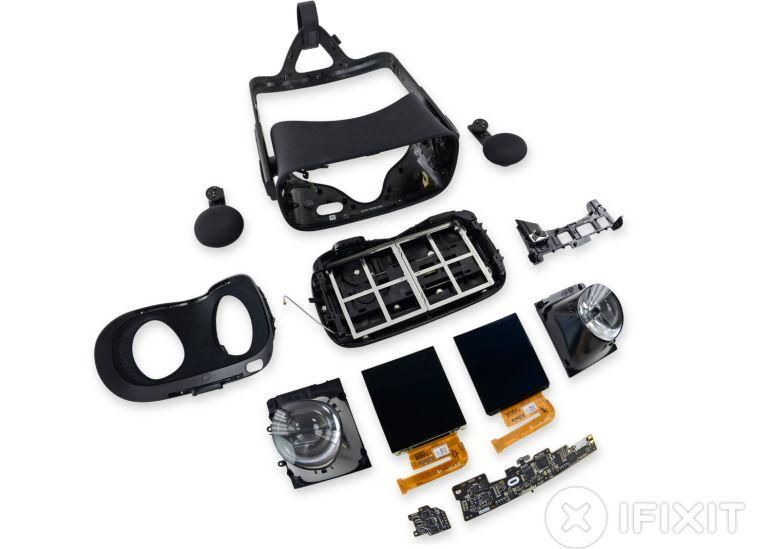Do you normally find it unbearable when you need to wait a few days, a week tops for that spanking new iPhone you pre-ordered to ship? How about if you’re not impressed by a Samsung Galaxy S upgrade, but are still willing to give the family a chance and another year to bring back microSD support and water protection?
Now try to imagine how it must have felt to be on board the wild Oculus Rift ride off the bat, testing both its development kits and waiting nearly four years for the virtual reality headset to reach wide-scale commercial availability.
You wouldn’t want a tiny little detail like a rigid design to spoil the highly anticipated launch moment, would you? Thankfully, that doesn’t seem to be the case, although iFixit rates the Rift CV1 (consumer version) a 7 out of 10 on its repairability scale, down from the DK2’s near-perfect 9 score.
What’s changed? A lot. There are now two OLED screens instead of one, with a combined resolution of 2,160 x 1,200 pixels, tiny LEDs generate many head tracking infrared dots imperceptible to the naked eye, and overall, “this is definitely the sleekest Rift yet.”
Its earpiece speakers are “super easily removed” and repaired in need, cable management is “much improved”, and the face pad pulls out easily, thanks to neat and simple plastic clips. On the not so bright side of things, you’re obligated to cut through the headset’s fabric if you want to replace the head strap, and removing the VR gadget’s lenses, displays and motherboard is “very difficult.”
Bottom line, there’s stuff anyone can fix, and things that should be left to the professionals. Curious about the Rift’s innards, their manufacturers, specifications and assembly techniques? Check out the full teardown at the source link below, and don’t try anything similarly destructive at home.
Source: iFixit

